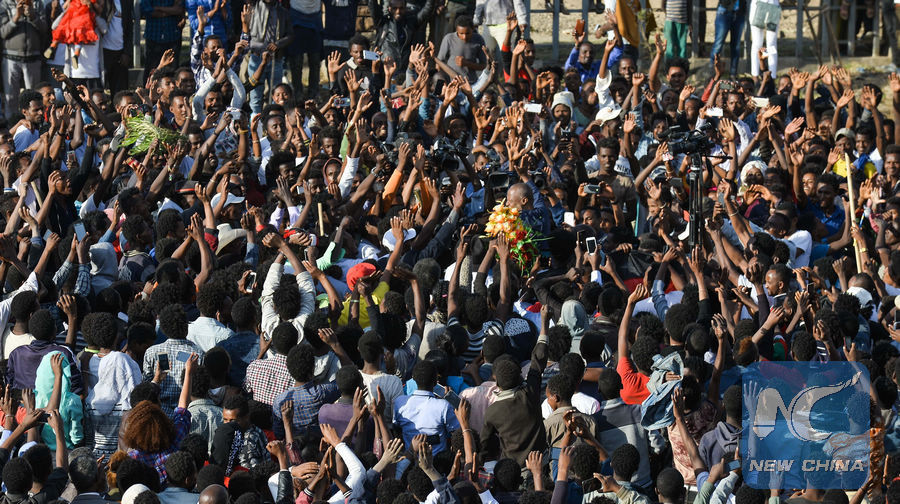
File photo shows people taking part in a demonstration along the streets of Addis Ababa, capital of Ethiopia, Jan. 17, 2018. (Xinhua/Michael Tewelde)
ADDIS ABABA, Feb. 10 (Xinhua) -- Africa's working-age population is expected to rise from 705 million in 2018 to nearly 1 billion by 2030, leading to higher unemployment in the continent, according to new report published by the African Development Bank (AfDB).
The African Economic Outlook 2019, which was launched on Friday on the margins of the 32nd African Union (AU) summit at the AU headquarters in Ethiopia's capital Addis Ababa, said the African continent would add about 295 million new working-age population by the year 2030, pushing the continent's working-age population up by 40 percent.
"As millions of young people join the labor market, the pressure to provide decent jobs will intensify," the report said.
At the current pace of labor force growth, the report said, the African continent "needs to create about 12 million new jobs every year to prevent unemployment from rising."
"If current trends continue, only half of new labor force entrants will find employment, and most of the jobs will be in the informal sector," the report said. "This implies that close to 100 million young people could be without jobs."
The report also stressed that the rapid growth achieved in Africa in the past two decades "has not been pro-employment."
Strong and sustained economic growth is necessary for generating employment, but that alone is not enough, the report said, stressing that the source and nature of growth also matter.
The report, which also analyzed Africa's current macroeconomic performance and future prospects, said that after "tepid" real GDP growth of only 2.1 percent in 2016, Africa's economy recovered with a 3.6 percent growth in 2017 and a 3.5 percent growth in 2018.
African economies are also projected to pull the continent's average growth up to 4 percent in 2019 and 4.1 percent in 2020. The projected growth is said to be higher than other emerging and developing economies as a whole, but lower than the economic growth of China and India, the report said.
According to the report, 40 percent of African countries are projected to see growth of at least 5 percent in 2019.
The report, however, stressed that the challenge for African economies "is to achieve a higher growth path that is inclusive and pro-employment."
Current and future projected economic growths are "not fast enough to address persistent fiscal and current account deficits and unsustainable debt," the report said.
The 2019 African Economic Outlook also indicated that Africa's macroeconomic and employment outcomes are better when industry leads growth, saying that "industrialization is a robust pathway to rapid job creation."
The report pointed to five trade policy actions that "could bring Africa's total gains to 4.5 percent of its GDP, or 134 billion U.S. dollars a year."
Eliminating all of today's applied bilateral tariffs in Africa, keeping rules of origin simple, flexible, and transparent, removing all non-tariff barriers on goods and services trade on a most-favored-nation basis, implementing the World Trade Organization's Trade Facilitation Agreement to reduce the time it takes to cross borders and the transaction costs tied to non-tariff measures, are among the five trade policy actions that would revive the continent's economic growth in the near future.
Negotiating with other developing countries to reduce by half their tariffs and non-tariff barriers on a most-favored-nation basis is another important trade policy element recommended to uplift the continent's growth.
The African Economic Outlook, published yearly by the African Development Bank, highlights economic prospects and projections for the continent as a whole and for each of the 54 countries.
This year's theme, "Integration for Africa's Economic Prosperity," is said to be in line with the AU's mission toward promoting sustainable development at the economic, social and cultural levels as well as the integration of African economies.

